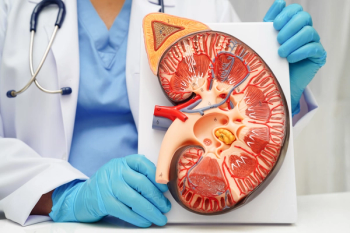
Researchers Identify the Neurological Mechanism Behind Anorexia Nervosa
Acetylcholine deficit observed in patients with anorexia nervosa suggest potential targeted treatment options.
Researchers may have identified the underlying neurological mechanism causing anorexia nervosa (AN), according to a study conducted in mice. Their findings suggest that an imbalance in dopamine activity in the dorsal striatum may be a shared factor for substance use disorders (SUDs) and eating disorders (EDs), such as AN, deepening the clinical understanding of the condition and paving pathways to a potential cure.
EDs are biologically influenced medical illnesses characterized by severe restrictions or interruptions in typical eating behaviors, often leading to numerous comorbidities due to the lack of nutrients needed to promote health and prevent chronic illness. There are various types of eating disorders, including AN, bulimia nervosa, binge-eating disorder, and avoidant restrictive food intake disorder, which can have different or overlapping symptoms.1
These conditions have significant quality of life implications for patients, and in some cases can even be life threatening; however, complete recovery is possible for patients and early detection is crucial. Treatment plans for EDs can include a combination of psychotherapy, medical care, and nutritional counseling, as well as treatment for comorbidities such as mental health disorders, which are highly prevalent in these patients.1
AN is a common ED characterized by the severe avoidance and restriction of food, extreme thinness, a fear of weight gain, and a distorted body image influenced by perceptions of weight. There are 2 subtypes of AN: (1) restrictive, when food is limited, and (2) binge-purge, when individuals eat large amounts of food in one sitting followed by vomiting or use of diuretics to remove what was eaten. AN can have serious health consequences and has an extremely high mortality rate compared with other psychiatric diseases, underscoring its severity and the need for more efficacious treatment.1
The study focused on the dorsal striatum, a region of the brain that is a part of the basal ganglia. The dorsal striatum is involved in the transition from reward-guided, goal-directed behaviors to habitual behaviors, which can eventually lead to compulsion. The study authors centered their research on cholinergic striatal interneurons (ChIs), which strongly influence dorsal striatum functions through their release of acetylcholine (ACh) and glutamate. The balanced combination of ACh and glutamate is crucial for normal brain function and behavior through dopamine regulation.2
The researchers identified a decrease in ACh caused by a genetic mutation called VGLUT3-p.T81 in the VGLUT3 gene, leading to the excessive habit formation causing self-starvation in patients with AN. In a mouse model, lower ACh was consistent with stronger habit formation, increased cocaine relapse, and unhealthy eating behaviors.2-3
The mice were treated with donepezil (Aricept; Eisai Co, Ltd), an acetylcholinesterase inhibitor that prevents the breakdown of ACh.2
“We found that it fully reversed the anorexia-like behavior in mice, and we believe that it could potentially offer the first mechanism-based treatment of anorexia nervosa,” said Salah El Mestikawy, PhD, the senior author of the study and researcher at the Douglas Research Centre, professor of psychiatry at McGill University in Montreal, Quebec, in a press release. “In fact, we are already seeing its effects on some patients with the disease.”3
In independent studies in Toronto and Montreal, treatment of 10 patients with low doses of donepezil demonstrated positive results with 7 patients showing improved disease and 3 in full remission. The results demonstrated the significant potential of donepezil for the treatment of AN, as well as other psychiatric diseases and compulsive behavior disorders. The researchers are set to further their studies through a double-blind, placebo clinical trial.3
The identification of VGLUT3-p.T81 provides valuable insights into the neurological mechanisms underlying AN and its connection with other disorders, such as SUD and EDs. The success of donepezil demonstrated in the independent studies offers patients renewed hope for targeted treatments that enhance treatment responses in patients.
REFERENCES
Eating disorders: about more than food. National Institute of Mental Health. 2021. Accessed July 18, 2024.
https://www.nimh.nih.gov/health/publications/eating-disorders Favier M, Martin Garcia E, Icick R, et al. The human VGLUT3-pT8I mutation elicits uneven striatal DA signaling, food or drug maladaptive consumption in male mice. Nat Commun. July 7, 2024. doi:10.1038/s41467-024-49371-1
A treatment for anorexia nervosa? News Release. July 9, 2024. Accessed July 18, 2024. https://www.eurekalert.org/news-releases/105079https://www.eurekalert.org/news-releases/105079
Newsletter
Stay informed on drug updates, treatment guidelines, and pharmacy practice trends—subscribe to Pharmacy Times for weekly clinical insights.
















































































































































































































